
|   |

|   |
The Mohan Khokar Dance Collection A century of Indian dance: 1901-2000 - Dr. Sunil Kothari e-mail: sunilkothari1933@gmail.com Photos courtesy: Ashish Mohan Khokar August 11, 2011 At the Habitat Gallery, New Delhi, this unique exhibition was mounted by Ashish Khokar, son of late Prof Mohan Khokar from 17th till 24th July 2011. It was inaugurated by Dr. Karan Singh, President of Indian Council for Cultural Relations, which had sponsored it and they have published a catalogue, edited by Ashish Khokar which indeed is a collector's item. As a matter of fact, after the exhibition is over one browses through the catalogue again and again and relishes the rare photographs and several items which constitute Mohan Khokar's mind-boggling collection. Several dignitaries participated in inaugurating several galleries as devised by Ashish and a veritable 'who is who 'of Indian dance attended the opening which indeed spoke volumes for dancers' and aficionados' affection for Mohan Khokar and respect for his efforts to document the history of Indian dance dating back to 1850!
Reams have been written earlier about Mohan Khokar. He was a unique phenomenon. I had met him in the year 1957 at Baroda where he was a Professor in the MS University's College of Dance and Music. At that time he was editing special issues of Marg devoted to dance including Bharatanatyam, Kathak, Manipuri, Kathakali, Folk Dances and so on. Dr Mulk Raj Anand, editor of Marg, had asked me to go and see him. Meeting him and seeing his collection of books and clippings, photographs etc., I was quite fascinated. Spending few days with him changed my life. He advised me to complete my studies of Chartered Accountancy and then plunge into researches in dance, study photography, make notes, interview artistes, travel and start collecting articles, books, souvenirs, brochures and anything connected with dance. It was indeed an amazing journey. I have collected a lot during all these years but Mohan Khokar's collection is indeed vast and rare. We shared a lot over the years and our correspondence spanning fifty years would, when Ashish and I bring that out, also provide important facts of Indian dance history. 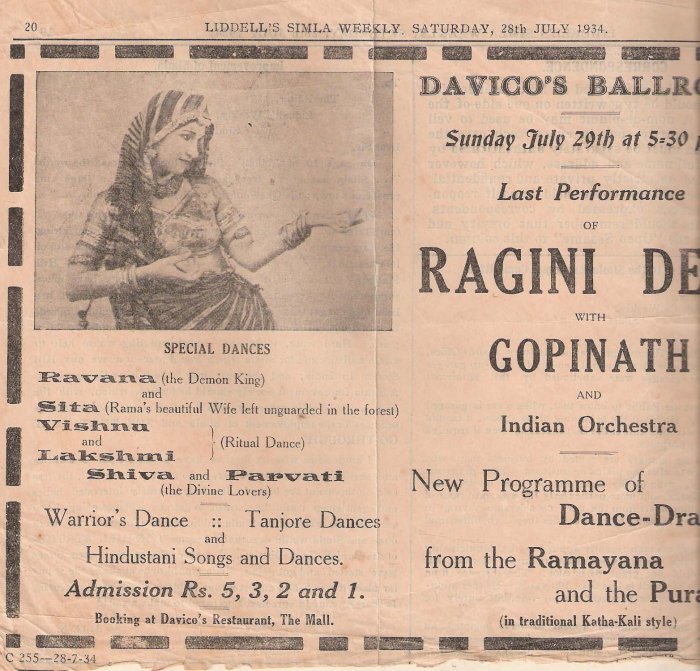 Advt in Liddell's Simla Weekly for performance by Ragini Devi and Gopinath, July 28, 1934 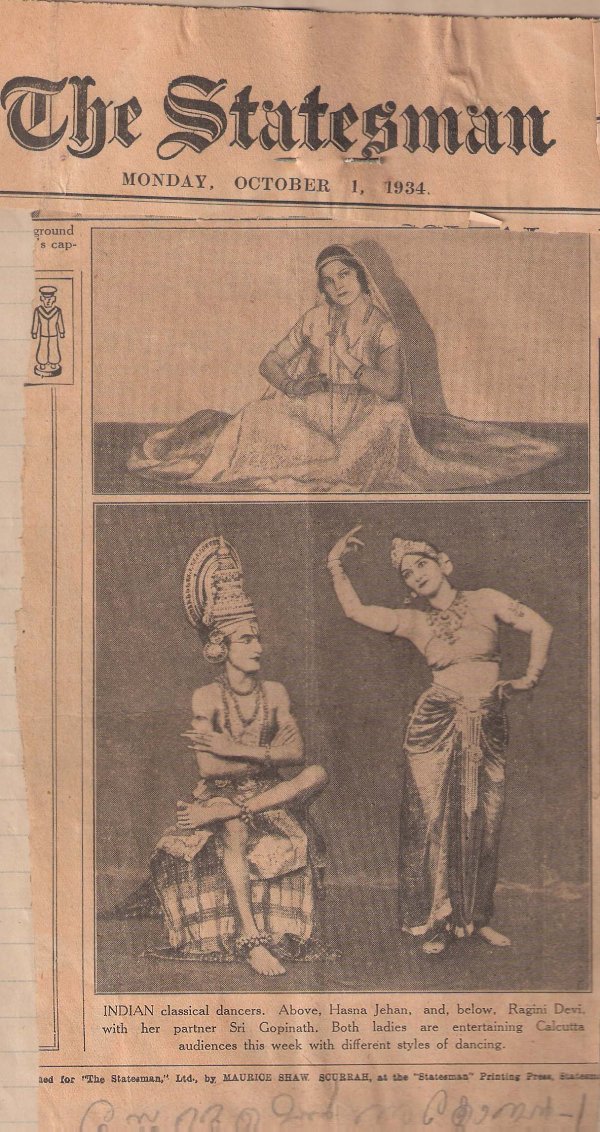 Photos of Hasna Jehan, Ragini Devi and Gopinath, in The Statesman, Oct 1, 1934 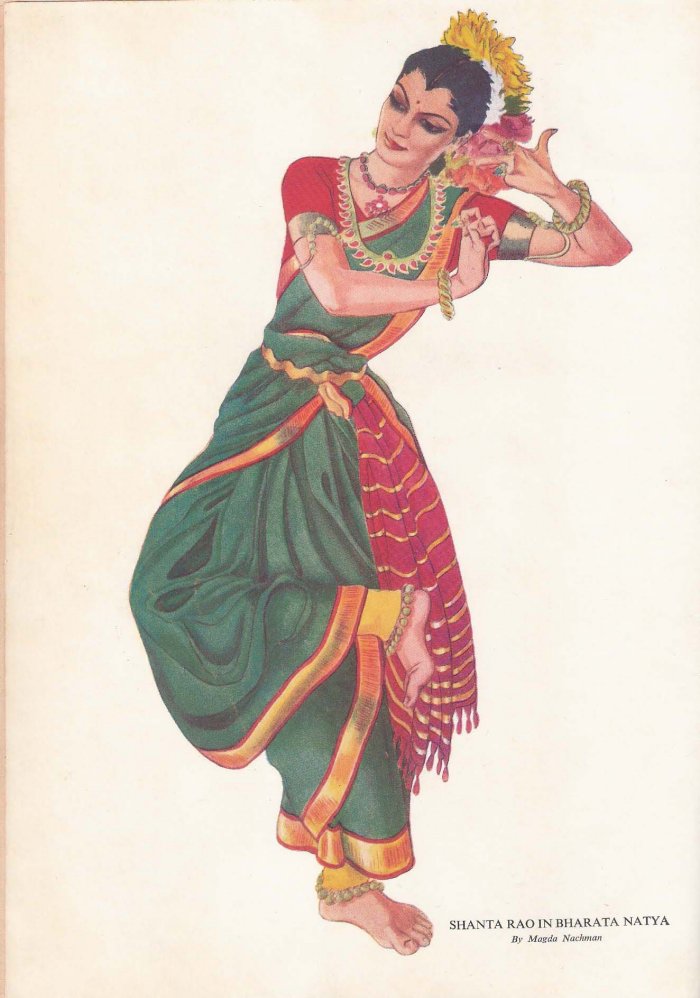 Painting of Shanta Rao by Magda Nachman 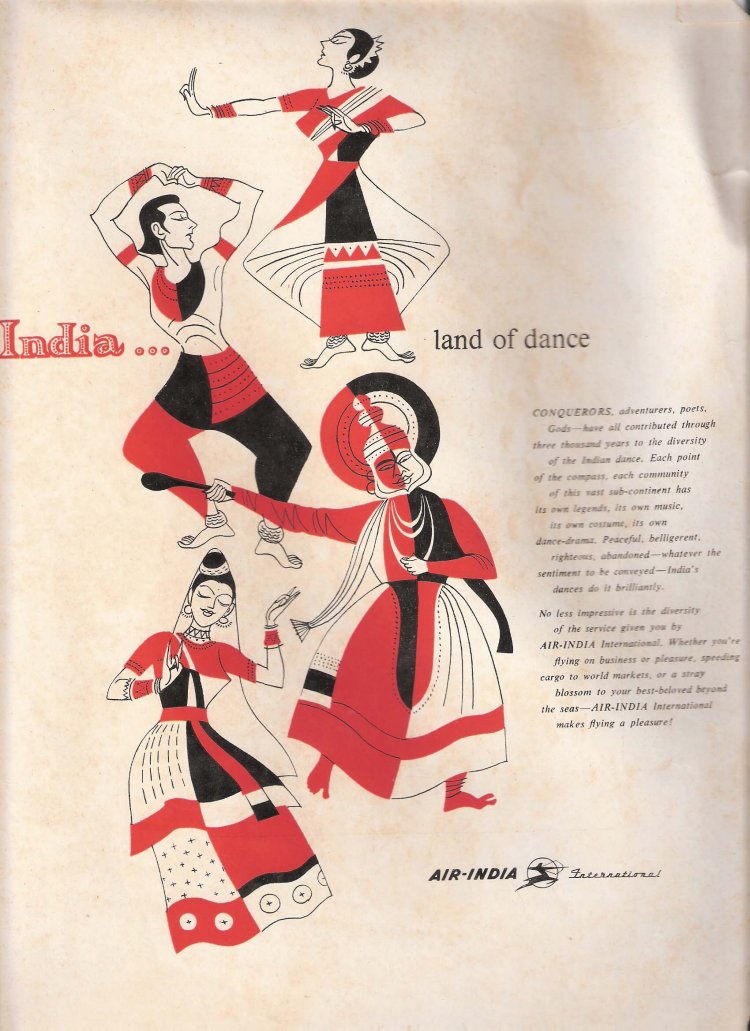 Air India advertisement 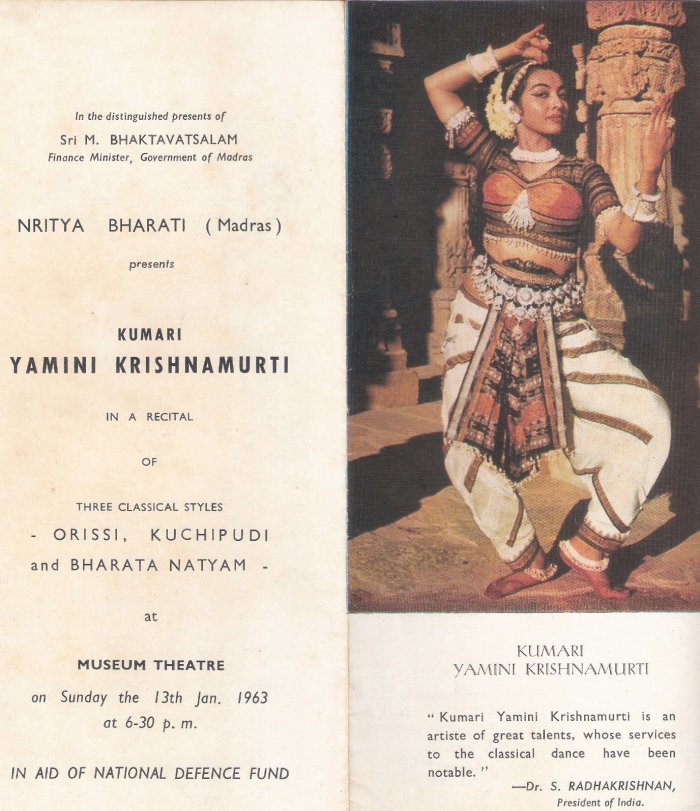 Invitation for Yamini Krishnamurti's presentation of 3 styles of dance on Jan 13, 1963 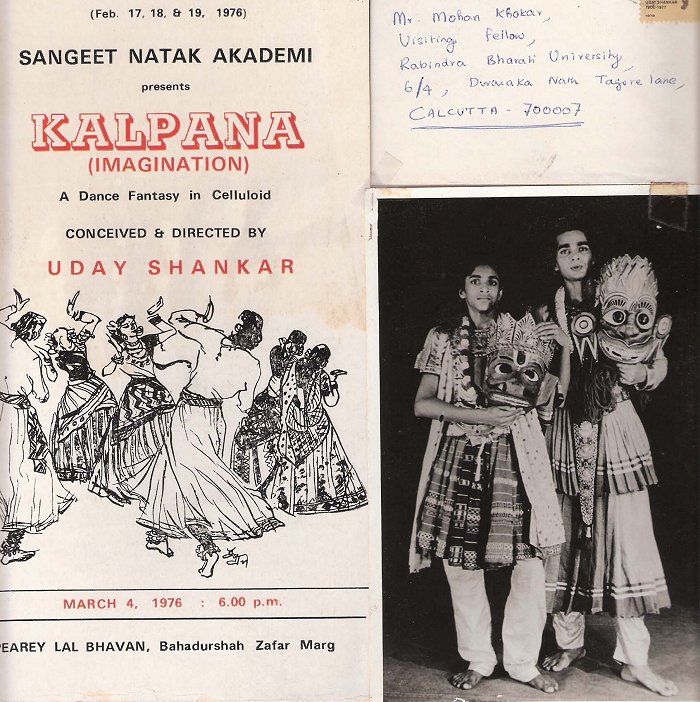 Invitation for Uday Shankar's 'Kalpana' dated March 4, 1976 The exhibition was only a fraction of the vast collection. It indeed appears to me a miracle that finally it was mounted and brought to the notice of the public, not only dancers, dance lovers but also who generally do not go to see dance. It indeed was educative and showed how Indian classical, folk, tribal, ritual, social dances exist side by side. For more than 25 years, Ashish has managed to preserve it. As I have often said, like a true 'pitru' and 'matru bhakta'- devoted son - he has done his parents proud. I have mounted two national exhibitions on Uday Shankar and Rukmini Devi on their Centenary celebrations, and I know what it takes to mount exhibitions on such grand scale. There have been limitations in display, emphasis, curatorial approach, but all said and done, what matters is the fact that finally the information about this collection is on public domain. 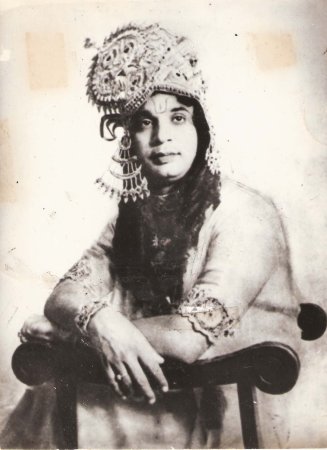 Shambu Maharaj 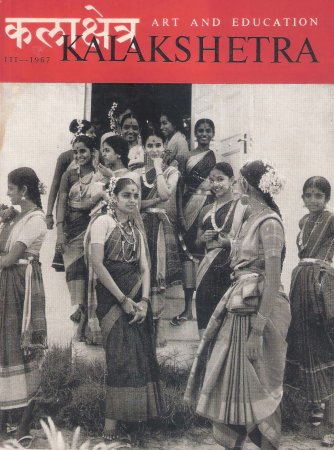 Kalakshetra journal 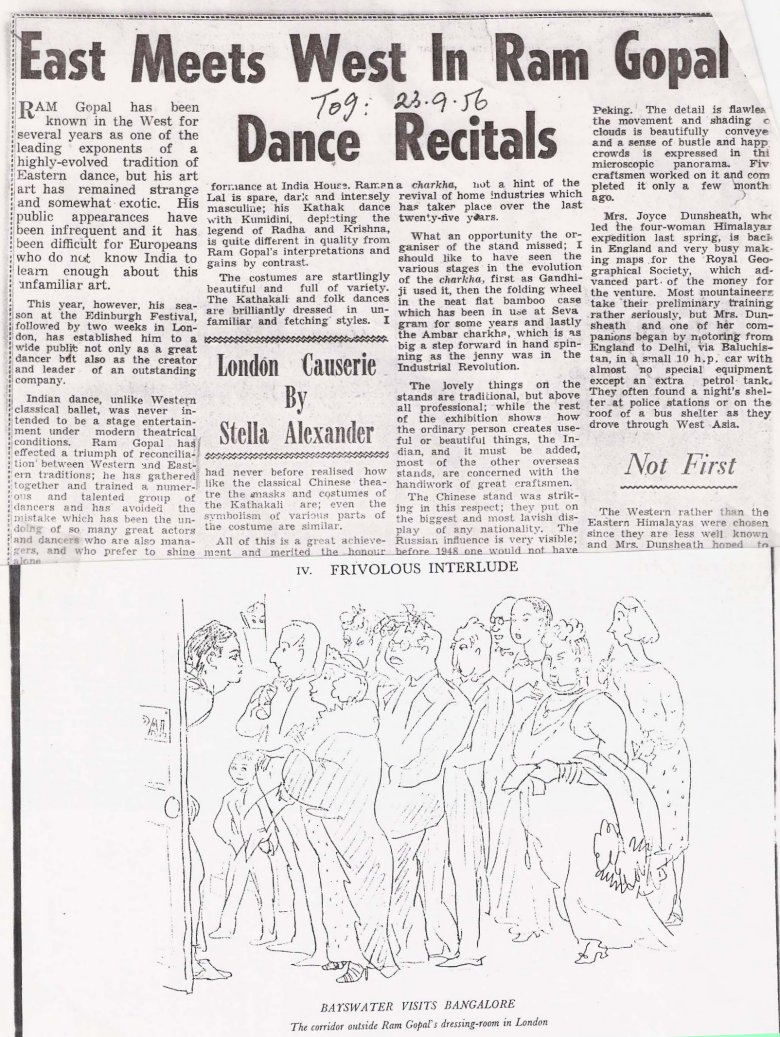 Review about Ram Gopal in Times of India, Sept 23, 1956 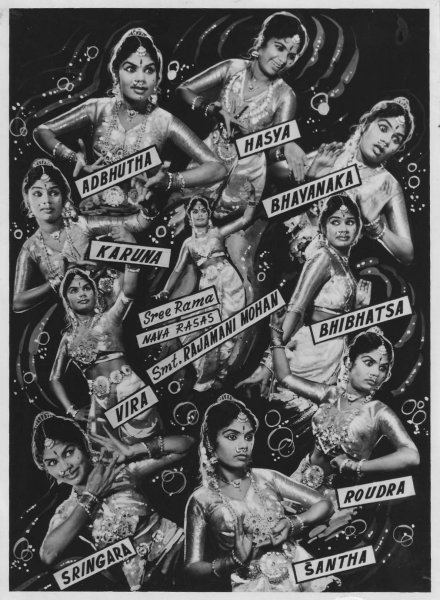 Navarasa by Rajamani Mohan NEXT STEP Such an exhibition needs at the earliest, a roof under which it can be housed. We all know about the Dance Collection of New York Public Library at Lincoln Centre. It is a model. It all began with one dance lover, Miss Genevieve Oswald (Gigi), who took upon herself to start working towards it. And over the years with support of the New York Public Library, it ranks today in the world as an institution to be emulated for dance collection. Ashish has had residency there and knows how such a collection requires human and financial resources with the help of several philanthropic persons and institutions, government agencies, private donors and tremendous goodwill. The preservation part is daunting. For more than 60 years, MK Saroja, Mohan Khokar's wife, has taken care of it and Ashish, his wife Elisabeth, and many well wishers and friends are helping out. But that is now not enough. Since Ashish is settled in Bangalore, Karnataka, I would suggest he should with goodwill that he has earned and the abilities he has shown to take care of the collection, approach the government and also private individual agencies to get it housed permanently in Bangalore. It will of course take time, but a beginning has to be made. And over a few years, maybe within five years, the dream would come true and the collection would be made accessible for future generation to study. It would be a great centre for research, as is Dance Collection in New York. After a part of the exhibition has toured in few countries abroad through assistance from ICCR, I am confident, even from abroad, help will be forthcoming. There are no other shortcuts. Having spent so many years building up tremendous goodwill and appreciation, it devolves upon Ashish and his friends to come forward to support this project. The agencies like Indian Council for Cultural Relations (ICCR) have already made a beginning. Now other agencies like the Department of Culture, Government of India, Public Libraries, Dance Departments of Universities and similar bodies will have to step in to preserve and make this collection accessible to public. The task is daunting on account of the nature of clippings, papers, negatives, photographs, posters, records, memorabilia, letters, correspondence, stamps, dolls, books, magazines, brochures, et al and some material needs digitalization, lamination on a war footing. The material has to be organized systematically to access for study and information. The classification under various heads, sub heads, references and cross references, with the latest state of art technology would have to be roped in, else major volume of collection shall deteriorate. So fragile is its nature. The interviews on tape have to be transferred, so that the quality remains intact. One can go on and on looking at the vastness of the collection. But preliminary work should be undertaken bit by bit even when the volume looks marathon.  Dr. Sunil Kothari is dance historian, scholar, author and a renowned dance critic. He is Vice President of World Dance Alliance Asia Pacific India chapter, based in New Delhi. He is honored by the President of India with Padma Shri, Sangeet Natak Akademi award and Senior Critic Award from Dance Critics Association, NYC. He is a regular contributor to www.narthaki.com and is a contributing editor of Nartanam for the past 11 years. Post your comments Pl provide your name and email id along with your comment. All appropriate comments posted with name and email id in the blog will also be featured in the site. |